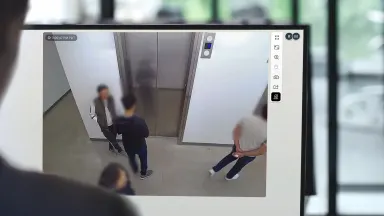New Research Reveals Almost Half of Healthcare Workers Are Considering Leaving Their Jobs Due to Workplace Safety Concerns
Healthcare workers are at the heart of thriving communities, dedicating their lives to the care of others. But our latest research with the Harris Poll reveals that we're failing them when it comes to one of their most fundamental needs: safety.
Healthcare workers face a disproportionately high risk of workplace violence, accounting for a staggering 73% of all nonfatal workplace injuries and illnesses due to violence. They are almost four times more likely to suffer serious injury from workplace violence than workers in any other setting, according to Bureau of Labor Statistics data.
The financial burden is also a material strain: according to research from the American Hospital Association, violence costs U.S. hospitals an estimated $18.27 billion annually, with 80% of these costs stemming from post-incident care and recovery.
More troubling is that these increasingly widespread episodes of violence, threats, and aggressive behavior are taking a very real and measurable toll on nurses, doctors, and medical staff. According to the National Council of State Boards of Nursing, 138,000 nurses have left the workforce since 2022, and 40% indicate intent to leave by 2029. The same data also reveals that workplace violence is among the primary drivers pushing them to pursue work outside of the industry. Left unaddressed, the foundation of our healthcare system – the dedicated professionals delivering care – is at risk at a time when it can least afford to lose skilled medical professionals.
To better understand the scope of this crisis and identify pathways forward, we partnered with The Harris Poll to survey more than 1,000 U.S. healthcare workers. The findings reveal a snapshot of what safety looks like for healthcare workers today and offer evidence-based insights and solutions for healthcare leaders, policymakers, and security professionals tasked with addressing this mounting crisis.
Key findings include:
Violence and harassment on the job is a daily reality: Nearly 3 million healthcare professionals begin each shift anticipating conflict, as one in five (21%) healthcare workers report they worry about verbal harassment from patients most or every time they go to work. Those fears are validated by the data: 79% of healthcare workers have experienced or witnessed aggressive behavior from patients.
This burden isn’t always evenly distributed: Women consistently report higher violence exposure of all types, and nurses are more than twice as likely to be physically assaulted on the job compared to physicians (60% vs. 29%). Age also plays a significant role: Gen Z workers report physical assault rates three times higher than Boomers (60% vs. 19%).
Employers lag on basic security measures: Despite these persistent threats, 41% of healthcare workers say their workplace has minimal security and 77% say that their company hasn't changed the level of security measures in the last 12 months. Even security measures as simple as visitor ID checks are only required at 40% of hospitals, the data shows.
The current environment is driving healthcare workers to pursue alternative employment: Nearly two in five healthcare workers in the U.S. say they have considered leaving their positions due to safety concerns, with almost half (45%) likely to leave their job in the next 12 months. Nurses reported higher departure intentions (50%) compared to physicians (39%). Over half of respondents (52%) also believe that safety concerns are actively deterring people from entering the profession.
Healthcare workers believe better security would help: More than four in five (82%) healthcare workers want their employers to increase security measures. When asked about specific measures that would give them peace of mind, on-site security guards (63%), weapon detection technology (49%), and panic buttons (48%) topped the list.
Learn more and access the full report here.





